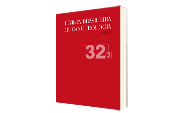Determinação de Receptores Hormonais em Lesões Benignas da Mama: Importância do Ciclo Menstrual
DOI:
https://doi.org/10.32635/2176-9745.RBC.1986v32n3.3268Keywords:
Benign Breast Pathology, Estrogen and Progesterone Receptor, Fluorescent Cytochemical Method, Ovarian Cycle, Oral ContraceptiveAbstract
A fluorescent cytochemical assay for the estrogen and progesterone receptors (ER, PgR) has been used to analyze the receptor content in benign human mammary lesions. The findings in fibroadenoma and fibrocystic mastopathy were similar, and showed varying degree of estrogen - and progesterone-binding capacity of the cellular cytoplasm. The relationship between menstrual cycle and receptor levels was studied, knowing exactly the day of the beginning of the last menses and the regularity of the cycie. Our results suggest that the measurements in the early follicular phase, rather than in other phases, prevent the occurrence of false low ER and PgR levels. Moreover, previous oral contraceptive use was positively associated with a decreased frequency ofER and PgR levels.
Downloads
References
Kastner M R O, Schettino A M S et al: Heterogeneidade celular nos tumores malignos de mama. lmplicação clínica do estudo de receptores hormonais. Rev. Bras. Cancerol. 1984; 30(4): 12-16.
Kastner MAO, Schettino AMS et al: Determinação de receptores hormonais em cancer de mama: Método histoquímico. Rev. Bras. Cancerol. 1983; 29 (3): 31-39.
Heuson JC, Leciercq G et al: Estrogen receptors: Prognostic significance in breast cancer. In: Estrogen receptors in human breast cancer, pp 57-72. Eds. McGuire WL, Carbone PP, Voilmer EP. Raven Press NY, 1975.
Johansson H, Terenius L et al: The binding of estradiol-17 B Human breast cancers and other tissues ''in vitro". Cancer Res. 1970; 30: 692-698.
Allegra J, Lippman ME et al: Estrogen receptor values in patients with benign breast disease Cancer. 1979; 44: 228-231. DOI: https://doi.org/10.1002/1097-0142(197907)44:1<228::AID-CNCR2820440137>3.0.CO;2-0
Buell RH, Tremblay G: Autoradiographic demonstration of H3-Estradiol incorporation in benign human mammary lesions. Am J. Chn. Pathoi. 1984; 81: 30-34. DOI: https://doi.org/10.1093/ajcp/81.1.30
Jacquemier JD, Rolland PH et al: Relationships between steroid receptor and epithelial cell proliferation in benign fibrocystic disease of the breast. Cancer 1982; 49: 2534-2536. DOI: https://doi.org/10.1002/1097-0142(19820615)49:12<2534::AID-CNCR2820491221>3.0.CO;2-J
LeCierq G, Heuson JC et al: Oestrogen receptors in breast cancer. A changing concept. Br. Med. J. 1975; 1: 185-189. DOI: https://doi.org/10.1136/bmj.1.5951.185
Martin PM, Kuttenn F et al: Studies on clinical hormonal and pathological correlations in breast fibroadenomas. J Ster. Biochem. 1978; 9: 1251-1255. DOI: https://doi.org/10.1016/0022-4731(78)90021-3
Martinac P, Romic-Stojkovic R et al: Estrogen and progesterone receptors in fibrocystic breast disease Breast. Diseases of the breast. 1983; 9: 24-25.
Menendez-Botet CJ, Nisseibaum JS et al: Correlation between Estrogen Receptor Protein and CEA in normal na carcinomatotis human breast tissue. Clinic. Chen. 1976; 22: 1366-1371. DOI: https://doi.org/10.1093/clinchem/22.8.1366
Rosen PP, Menendez-Botet CJ et al: Pathological review of breast lesions analysed for ERP. Cancer Res. 1975; 35: 3187-3194.
Terenius I, Johansson H et al: Malignant and benign human mammary disease:. Estrogen hinding in relation to clinical data. Cancer 1974; 33: 1364-1368. DOI: https://doi.org/10.1002/1097-0142(197405)33:5<1364::AID-CNCR2820330522>3.0.CO;2-7
Meyer JS, Stevens SC et al: Estrogen receptor assay of mammary carcinoma. Am. J. Clin. Pathol. 1979: 72: 564-570. DOI: https://doi.org/10.1093/ajcp/72.4.564










